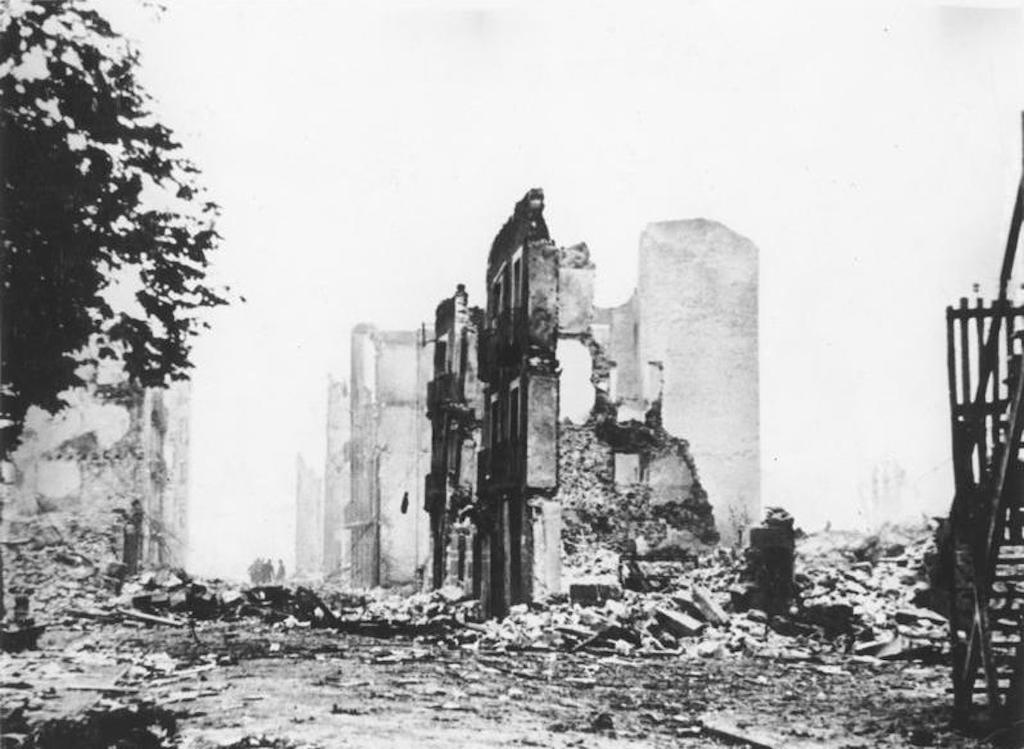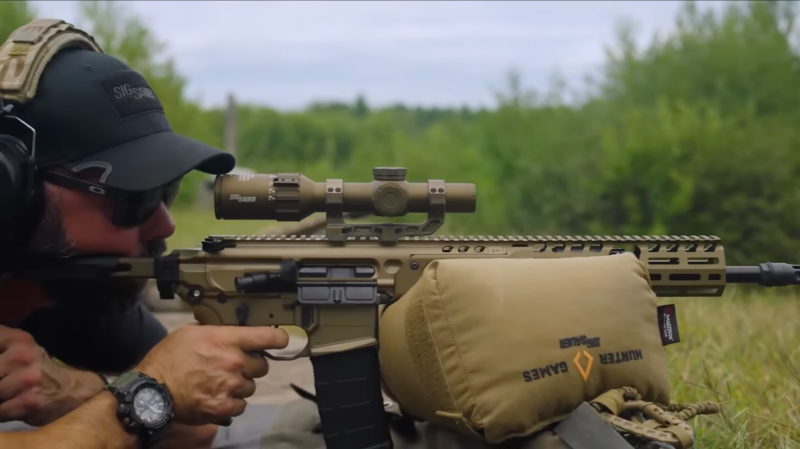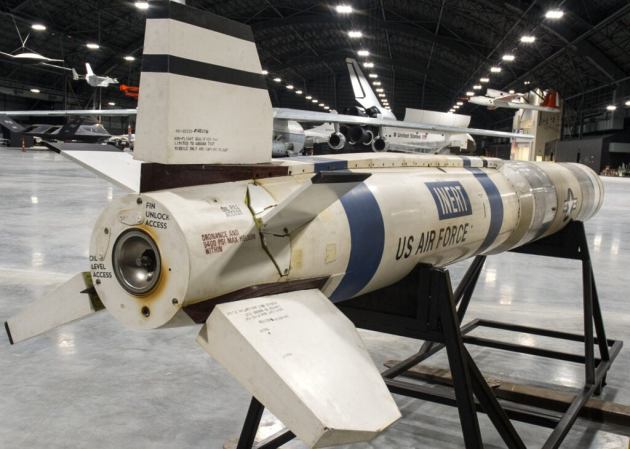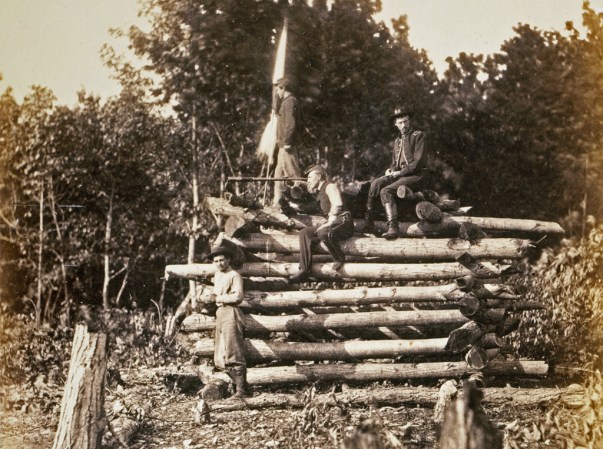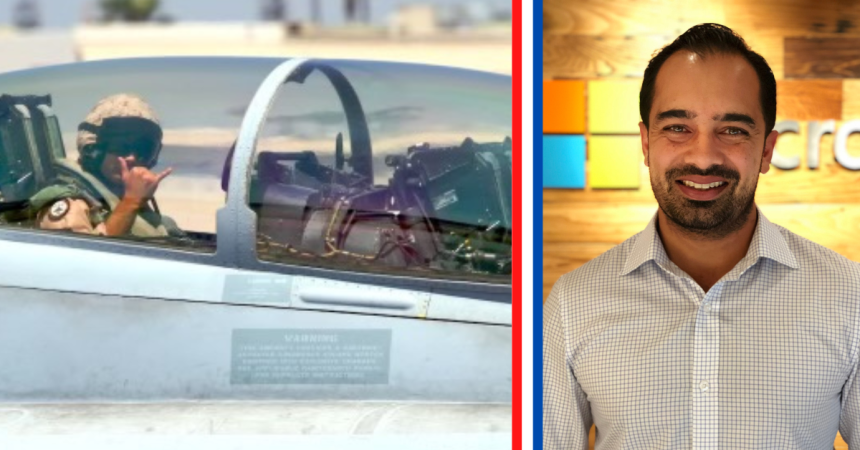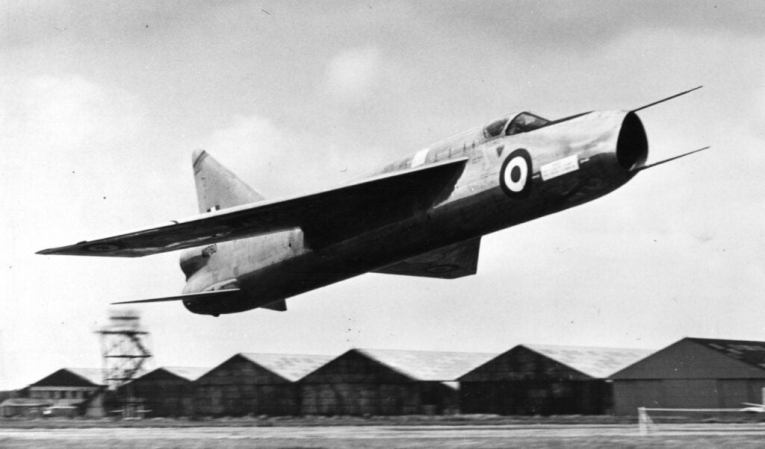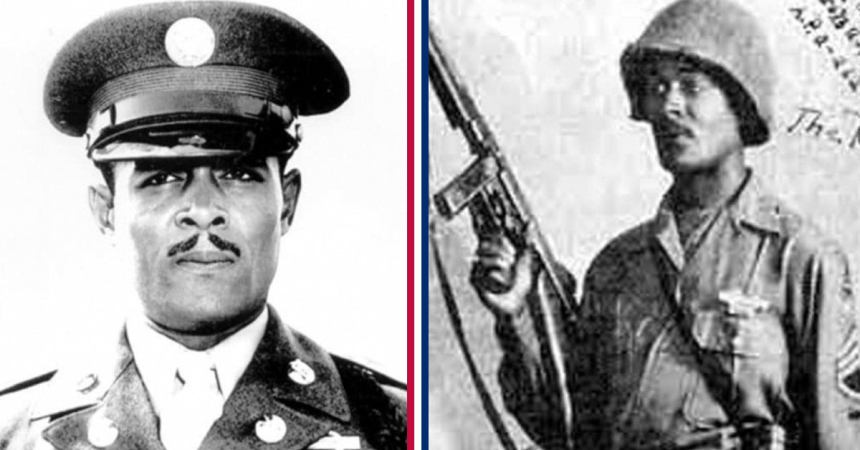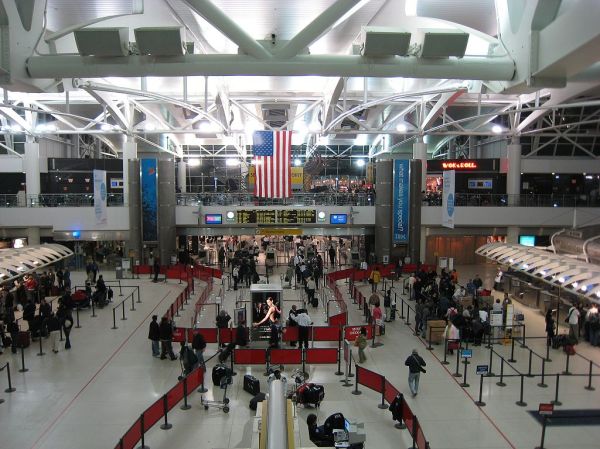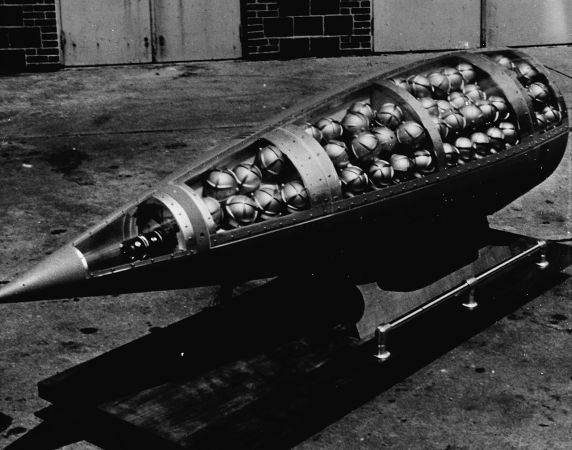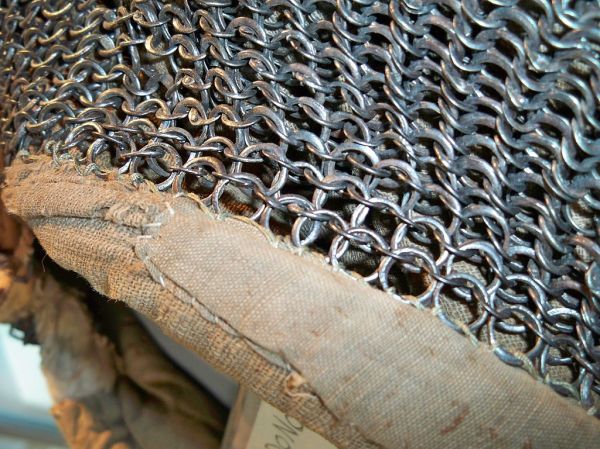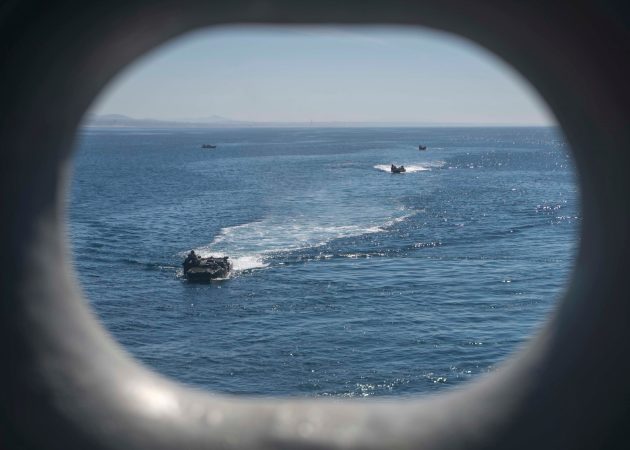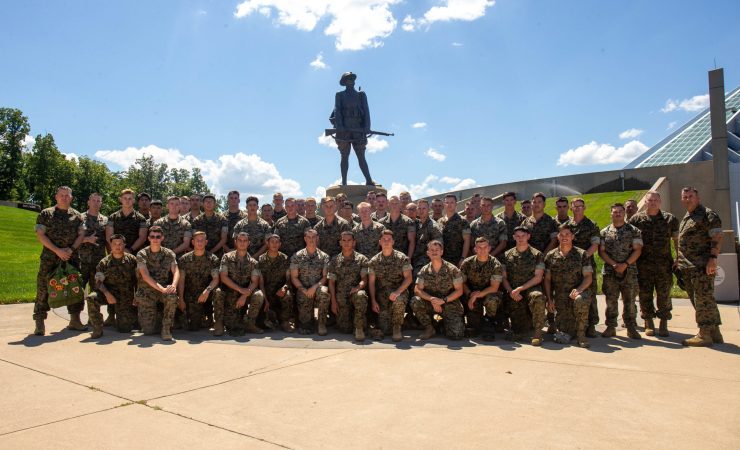The now infamous Guernica raid is one of the earliest aerial bombings to garner worldwide attention and is widely considered a war crime.
On June 6, 1936, 15,000 men of the Condor Legion stood at attention on the Lustgarten in central Berlin. Waiting in silence, the eyes of the soldiers and airmen remained fixed on the canopied lectern draped with blood red swastikas. On either side of the lectern, boys from the Hitler Youth stood vigil holding signs etched with the names of fallen legionnaires.
The only audible sound was the intermittent flapping of the Condor Legion and Spanish Bandura flags in the afternoon breeze.
After his signature dramatic pause, Chancellor Adolf Hitler stepped into view. Gazing down onto a rapt uniformed audience ringed by crowded grandstands, the Fuhrer proceeded to deliver a speech formally welcoming the Condor Legion home after a successful intervention in Spain. In this rare personal address, he recognized the legion’s triumph and sacrifice while expressing Germany’s enduring gratitude to the assembled campaign veterans all of whom would be recipients of the Spanienkreuz or Spanish Cross.
And grateful he should have been.
During the unit’s approximately three-year involvement in the Spanish Civil War, the Condor Legion had exceeded even the most optimistic projections.
Recruited from the ranks of the Luftwaffe and Wehrmacht, these legionnaire ‘volunteers’ played an instrumental role in supporting the victorious Nationalist forces during the Spanish Civil War from July 1936 until March 1939. Despite being relatively modest in number (20,000 total) the Condor Legion had an outsized influence achieving mission success while enhancing German prestige. Several advances in mechanized warfare, including the devastating Blitzkrieg, can be attributed to the German expedition in Spain.
Spanish Civil War
The civil war began in July 1936 as senior officers and factions representing the largely Catholic Nationalists revolted against a left-wing Republican government that drew support from communist organizations and governments.
The Nationalists appealed to the highly decorated Gen. Francisco Franco to lead the insurgency. Franco assumed command of the seasoned 30,000 troops of the Spanish Army of Africa and Foreign Legion stranded in Morocco.
Unable to safely traverse the Mediterranean Sea, Franco turned to fascist Germany and Italy for help. His request for 10 transport aircraft was not only honored but more than doubled by Hitler who promptly sent 20 Lufthansa Junkers 52 airliners and six Heinkel 51 biplane fighters to participate in the largest military airlift ever at that time.
Over the next three months, 13,500 Nationalist troops had been transported to bases in southern Spain. By October of 1936, Germany had secured air dominance over the Strait of Gibraltar, the key bottleneck in the western Mediterranean. This successful escort mission would soon lead to increased German material support, advising and ultimately direct combat. Italian Prime Minister Benito Mussolini also sent troops and aircraft.
The Rome/Berlin Axis had emerged.
As the conflict intensified, the Spanish Civil War attracted global media attention becoming a cause celebre for intellectuals. Indeed, famous writers like Ernest Hemingway, George Orwell and Martha Gellhorn sent riveting dispatches from the front only heightening interest. Published in 1940, Hemingway’s acclaimed novel “For Whom the Bell Tolls” is based on his experience covering the war. Orwell was wounded by a sniper’s bullet while fighting for the Republic. His subsequent disenchantment with the cause and Stalinist communism inspired his landmark book, “Animal Farm.”
Approximately, 32,000 idealists from 54 countries, including American volunteers of the Abraham Lincoln Battalion, enlisted in the International Brigades to fight Franco’s Nationalists.
Similar to so many “grassroots” movements, however, politically sophisticated and well-funded forces were at work surreptitiously providing varied means of support to the leftist cause. The Comintern, the international arm of the Communist Party based in Moscow, sent personnel and military aid.
The reasoning behind Hitler’s decision to escalate has been the source of historical debate. Although Reichsmarschall Hermann Goering observed that, “Two years of war is preferable to 10 years of training,” it is likely that testing and gaining experience was, to the Fuhrer, subordinate to broader, strategic objectives.
By supplanting the Soviet supported Republican government with an indebted ally, Germany would not only establish a robust naval presence on the Iberian Peninsula but also isolate their French rival on the continent. Though a total victory for Franco’s Nationalists was unwelcome as Hitler outlined during a conference at the Reich Chancellery on Nov. 10, 1937: “On the other hand, a 100% victory for Franco was not desirable either, from the German point of view; rather were we interested in a continuance of the war and in the keeping up of the tension in the Mediterranean.”
Hitler endeavored to support Franco to the degree that German/Nationalist efforts would hinder Soviet influence while simultaneously indebting Spain to reciprocate in a commensurate fashion during subsequent offensive Nazi campaigns.

Activation of the CONDOR LEGION
Regardless, by November 1936, the Condor Legion was a fully-equipped, coordinated task force. Recruited from across the armed services, Legion personnel were covertly deployed to Spain under the code name ‘Winter Exercise Hansa. Travel arrangements were facilitated by the Nazi Strength Through Joy organization and these ‘photographers, salesmen and engineers’ were all issued false civilian identification. Dressed in white linen suits, the undercover legionnaires lounged and played shuffleboard on the decks of leisure ships before disembarking onto Spanish soil. Known for their dash and elan, the elite pilots of the Condor Legion would display this flair in combat as well as during off-duty hours. In the evenings, Legion pilots would entertain dark haired beauties in fashionable cafes. After a restful sleep, legionnaires would enjoy strong coffee, fresh fruit and a round of golf before preparing for the afternoon sortie.
Generalleutnant Hugo Sperrle was the legion’s commander with Oberst Wolfram von Richtofen, cousin of the legendary Red Baron, serving as a chief of staff. Legionnaires wore khaki-brown uniforms with Nationalist rank insignia. Aircraft markings featured the St. Andrews cross on the rudder and device reversed out of black roundels on the wing. A typical rotation spanned from 9 to 12 months. Initially restricted to an advisory and training role, Legion pilots and troops were soon pressed into service due to the poor performance of their Nationalist colleagues.
The Ju 52 transports were reconfigured as bombers and along with the He 51 fighters, German airmen quickly established air superiority resulting in significant Nationalist territorial gains. On November 15, 1936 Sperrle led three squadrons (36 planes) of Ju-52 bomber conversions on a massive raid against Republican ships docked in Cartegena. The USSR responded by sending quality aircraft and experienced pilots to contest Spanish skies. The Polikarpov I-15 biplanes and Tupolev SB-2 bombers demonstrated their superiority over the He 51 and Fiat CR.2s over Madrid skies and during a devastating attack against Italian troop columns outside Guadalajara.
The Condor Legion also included non-aircraft units. Panzer Group Imker, the armored ground component, was commanded by Wilhelm Ritter von Thoma. Primarily equipped with Panzer I light tanks and 88 mm Flak 18 anti-aircraft artillery guns, Group Imker would also migrate from advisory to direct combat functions.
German Reinforcement and Escalation
Luftwaffe commander, Reichsmarschall Hermann Goring, promised better aircraft but replacements would take time. The Legion would need to persevere through 1936 into 1937 with the He 51s and converted Ju bomber though Sperrle and Von Richtofen continued to enjoy success by testing novel and aggressive tactics. Of the various aircraft that were delivered to the Condor Legion, three emerged as force multipliers.
The Messerschmidt Bf 109 was among the most advanced fighters and responsible for driving the Soviet I-15s and I-16s out of the sky in the Spring of 1937. The 109 would tally more aerial victories than any other aircraft by the end of World War II. The fastest German bomber, the Heinkel 111 made its combat debut in March of ‘37 and would remain a mainstay of the Luftwaffe in subsequent years. It was the terrifying Junkers 87 dive bomber equipped with the unnerving ‘Jericho trumpets’ that would cause infantry to abandon their positions enmasse in 1938.
Republican forces were forced to yield the skies to the modern German aircraft giving the Condor Legion and Franco’s Nationalists a decisive advantage. However, it was the He 51 and Ju 52 that would take part in the most controversial campaign of the Spanish Civil War.
Guernica
By April 1937, Franco’s Nationalists bolstered by German air support had pushed remnants of the Republican resistance in northwestern Spain. Twenty-three enemy Basque battalions were retreating toward the little hill town of Guernica. Two main escape routes intersected the Catholic town of 5,000 that held great cultural significance to the Basques.
April 26 was Market Day in Guernica drawing people from throughout the area. In the late afternoon, a He 111 flew over Guernica dropped a single bomb receiving no return fire. A few minutes later, Condor Legion He 51s and Ju 52s bombed and strafed the defenseless town.
Manoli Agiuirre was nine years old but would never forget the ominous sound of the approaching black planes: I heard a fizzing noise then cries and a loud crash…..the ground trembled and sky red with the reflections of explosions..I was so scared…the planes shot those who tried to escape with machine guns.
Forty three aircraft of the Condor Legion participated in the 2 ½ hour raid essentially razing the defenseless town. The attack was shocking in its methodical brutality and absence of a viable military target. Casualty estimates varied but at least 400 people were killed and thousands injured. Press reports sparked international outrage.
“The raid on Guernica is unparalleled in military history,” wrote George Steer in the Times of London. “Guernica was not a military objective. A factory producing war material lay outside the town and was untouched. The object of the bombardment was seemingly the demoralization of the civil population and the destruction of the cradle of the Basque race.”
However, little remorse was expressed by the participating legionnaires.
Von Richtofen, the mission planner and operational commander wrote in his diary:
“Guernica, city with 5,000 residents has been literally razed to the ground. Bomb craters can be seen in the streets. Simply wonderful!”
Hauptmann Karl Von Knauer, a squadron leader, said later of the Guernica attack: “I conducted the operation as a soldier and it had no impact on me at all. In the course of my duties and without regard for my own life, I carried out my orders. At the time, I felt we were fighting a war against communism.”
Franco’s Nationalists downplayed the attack and implausibly attempted to blame the Republicans. Despite the lack of military targets, the operation did have strategic value ensuring Franco a Bilbao victory in northern Spain. The attack inspired Pablo Picasso’s now famous anti-war painting ‘Guernica.’
The mural-size oil painting in stark gray, black and white shows people, animals and buildings under bombardment. Its exhibition on a world tour in 1937 rallied support for the Republican cause.

Outcome
Franco’s Nationalists toppled the Republican government on April 1, 1939.
The Condor Legion had prevailed but earned a reputation for wanton brutality though atrocities abounded on both sides. Hitler would leverage this notoriety in his negotiations. As well, the Luftwaffe replicated the Guernica carpet bombing in 1940 smashing both Dutch and English cities; Rotterdam and Coventry respectively.
The Luftwaffe enjoyed particular success and played a pivotal part in the Spanish campaign. Once the superior Bf 109 appeared in substantial numbers, the pendulum swings in favor of the Germans claimed 327 enemy aircraft while losing 72.
From a technical perspective, the experience of the Condor Legion allowed the Luftwaffe and Wehrmacht to develop coordinated doctrines in a contested environment. The Spanish Civil War allowed the best and brightest Luftwaffe pilots to hone their skills and advance previously untested methodologies. Major Werner Molders succeeded the legendary Adolfo Galland as fighter squadron commander as it transitioned to Bf 109s. Molders would become the leading Condor Legion ace with 14 victories as well as the first pilot in aviation history to tally 100 aerial victories earning the Spanish Cross in Gold with Swords and Diamonds among a multitude of awards, though his greater contribution was more profound and changed the configuration of the standard Luftwaffe fighter formation.
Previously, fighters flew in tight three-airplane ‘V” formations but Molders believed the pilot’s attention was drawn to avoiding collisions. Due to his recommendation, the Luftwaffe shifted to a two-plane formation called the “Rotte” with a fighter and wingman flying about 600 feet apart, allowing each to focus on the enemy. Two Rotten combined to form a Schwarm which proved to be effective for the Luftwaffe in Spain and in subsequent campaigns. These “Finger Four” tactics were more flexible and effective due to the newly installed voice radios in the cockpits of the aircraft.
However, despite the impressive tactical advances some felt Goring and Hitler may have drawn the wrong conclusions from the Condor Legion expedition in Spain.
No other pilot embodied the Condor Legion like Adolf Galland. Brilliant, charismatic and fearless, ‘Dolfo’ earned universal respect among his peers, commanders and even the enemy (honored at the Air University Gathering of Eagles in 1984 at Maxwell AFB in Alabama.) His Me-109E featured a Mickey Mouse insignia holding a hatchet and smoking a cigar and the only cigar lighter equipped cockpit in the Luftwaffe. At 30, he became the youngest general in the armed services. Galland cited the ‘arrogance of military and political leadership’ as the cause of so many strategic errors contributing to the end of the Third Reich. It is entirely plausible that the Condor Legion’s success in the Spanish Civil War imbued Hitler with a false confidence ultimately sowing the seeds of Germany’s defeat.
On September 1, 1939 German forces launched a massive attack to the east overwhelming Polish resistance. The coordinated blitzkrieg attacks unleashed by the Luftwaffe and Wehrmacht had been introduced in Spain three years earlier.
World War II had begun.

